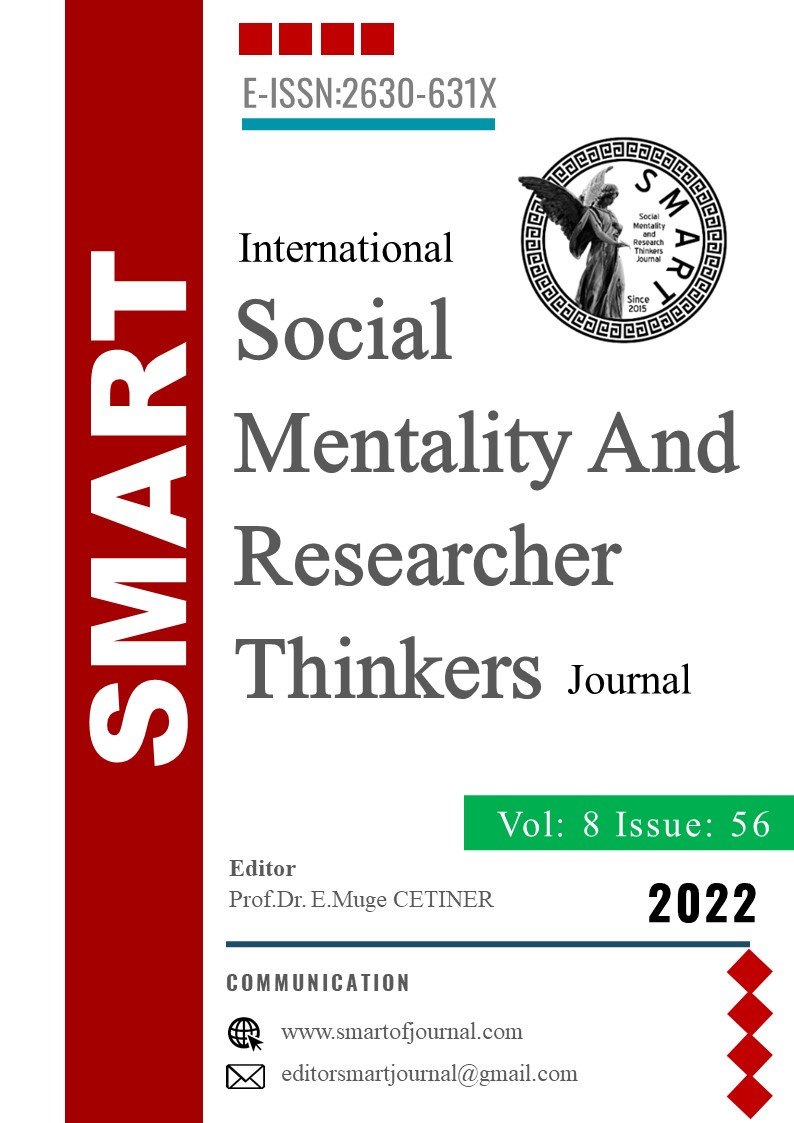Author :
Abstract
Bu çalışmanın amacı araştırmacıların derslerinde İşbirlikli konu jigsaw tekniğinin doğru uygulanabilirliğini sağlamaya yöneliktir. Çalışmada önce İşbirlikli model hakkında genel bir literatür taraması yapılmıştır. Daha sonra işbirlikli öğrenme modelinin derslerde en sık kullanılan yöntemlerine yer verilmiştir. İşbirlikli yöntemler arasında en çok kullanılan Jigsaw yönteminde kullanılan tekniklerden söz edilmiştir. Bu tekniklerin ne ölçüde kullanıldığına dair bir literatür taraması yapılmıştır. Taramada elde edilen veriler Tablo olarak sunulmuştur. Çalışmada bu tekniklerden işbirlikli konu Jigsaw’ın diğer Jigsaw’lardan farklı yönleri izah edilmiştir. Sonra konu Jigsaw’ın nasıl uygulanacağı üzerinde durulmuştur. Konu jigsaw uygulaması dört basamaktan gerçekleştirilmektedir. Bu basamaklardan ilki işbirlikli öğrenme grupların oluşturulması, ikincisi alt konularının belirlenmesi, üçüncüsü alt konuların birleşimi, dördüncüsü ise uygulanan sınavlardır. Bu basamakların her biri ayrıntılı bir şekilde açıklanmıştır. Ayrıca araştırmacıların daha iyi anlayabilmeleri için uygulama şematik hale getirilmiştir. Çalışmamızda örnek bir uygulamaya yer verilmiştir. Bu örnek uygulamada neler yapılacağı, konu jigsaw basamakları göz önünde tutularak gerekli bilgiler verilmiştir. Sonuç kısmında araştırmacıların nelere dikkat etmeleri gerektiğinden ayrıntılı olarak söz edilmiştir.
Keywords
Abstract
The aim of this study is to ensure the correct applicability of the cooperative subject jigsaw technique in the lectures of the researchers. In the study, a general literature review was made about the Cooperative model. Then, the most frequently used methods of cooperative learning model in the lessons are given. The techniques used in the Jigsaw method, which is the most widely used in these methods, are mentioned. A literature review was conducted on the extent to which these techniques were used. The data obtained in the scan are presented as a Table. In the study, the cooperative subject jigsaw, one of these techniques, has been explained in different ways from other jigsaws. Then the subject is focused on how to apply jigsaw. Subject jigsaw application is carried out in four steps. The first of these steps is to create cooperative learning groups, the second is to determine the sub-topics; the third is the combination of the sub-topics and the fourth is the Exams. Each of these steps is explained in detail. In addition, the application has been made schematic so that researchers can understand it better. A sample application is included in our study. In this example application, necessary information is given by considering the jigsaw steps of what to do. In the conclusion part, it is mentioned in detail what the researchers will pay attention to.
Keywords
- Akhavan-Tafti M. (2014). Acknowledging the difference: Lessons from differentiated instruction, multiple
- 1-10. Aronson, E., Blaney,N., Stephan, C., Sikes, J., & Snapp, M. (1978). The jigsaw classroom. Beverly Hills,
- Azizan, M. T., Mellon, N., Ramli, R. M., & Yusup, S. (2018). Improving teamwork skills and enhancing deep
- Educational for Chemical Engineers, 22, 1–13. https://doi.org/10.1016/j.ece.2017.10.002
- Beathe Liebech-Lien. (2020). The bumpy road to implementing cooperative learning: Towards sustained
- Buchs, C., Filippou, D., Pulfrey, C., & Volpé, Y. (2017). “Challenges for cooperative learning
- Research and Pedagogy, 43(3), 296–306. https://doi.org/10.1080/ 02607476.2017.1321673.
- Cohen, E. G., Brody, C. M., & Sapon-Shevin, M. (2004). Teaching cooperative learning: The challenge for
- Doymus, K. (2007). Teaching chemical equilibrium with the Jigsaw technique. Research in Science
- Geels, F. W. (2020). Micro-foundations of the multi-level perspective on socio-technical transitions:
- Ghaith, G. M. (2018). Teacher perceptions of the challenges of implementing concrete and conceptual
- Gillies, R. M., & Boyle, M. (2010). Teachers’ reflections on cooperative learning: Issues of implementation.
- Teaching and Teacher Education, 26 (4), 933–940. https://doi.org/10.1016/j.tate.2009.10.034
- Gillies, R., Ashman, A., & Terwel, J. (2008). The teacher's role in implementing cooperative learning in the
- Grenier, M., & Yeaton, P. (2019). Social thinking skills and cooperative learning for students with autism,
- Hedeen, T. (2003). The reverse jigsaw: A process of cooperative learning and discussion. Teaching Sociology,
- Holliday, D. C. (2000). The development of Jigsaw IV in a secondary social studies classroom. Lanham, MD:
- Johnson, D. W., Johnson, R. T., & Stanne, M. E. (2000). Cooperative Learning Methods: A meta-analysis.
- Jung, H. (2019). The evolution of social constructivism in political science: past to present. SAGE Open.
- Kimmelmann, N., & Lang, J. (2019). Linkage within teacher education: cooperative learning of teachers and
- Mara Sapon-Shevin, & Nancy J. Zollers (1999). Multicultural and disability agendas in teacher education:
- Midilli, Ü., & Atıcı, T. (2019). Uluslararası Bakalorya diploma programı ve ulusal programda öğrenim gören
- Polloway, E. A., Patton, J. R., & Serna, S. (2001). “Strategies for teaching learners with special needs”, 7th
- Sapon-Shevin, M. (1996). Full inclusion as disclosing tablet: Revealing the flaws in our general education
- Sharan, Y. (2010). Cooperative learning for academic and social gains: Valued pedagogy, problematic
- practice. European Journal of Education, 45(2), 300–313. https://doi.org/10.1111/j.1465-3435.2010.01430.x
- Slavin, R. E. (1980). Cooperative learning. Review of Educational Research, 50(2), 315-342,
- Stahl, R. J. (1994). Cooperative learning in the social studies classroom: A handbook for teachers. Menlo
- Veldman, M. A., Doolaard, S., Bosker, R. J., & Snijders, T. A. B. (2020). Young children working together.
- Instruction, 67, 101308, https://doi.org/10.1016/j.learninstruc.2020.101308.





